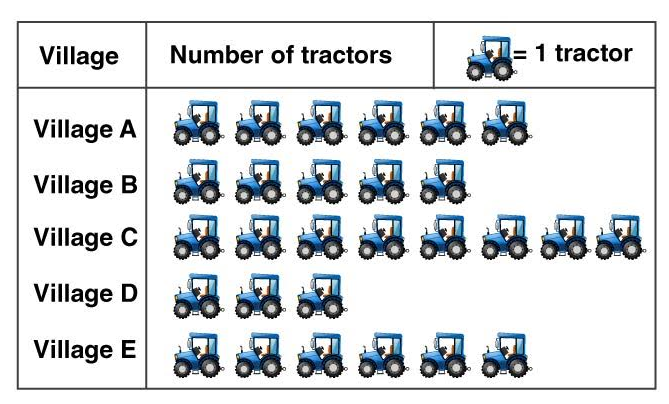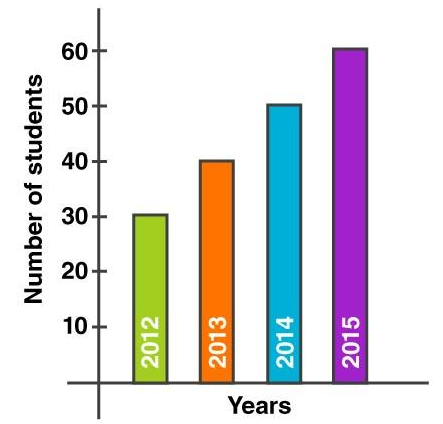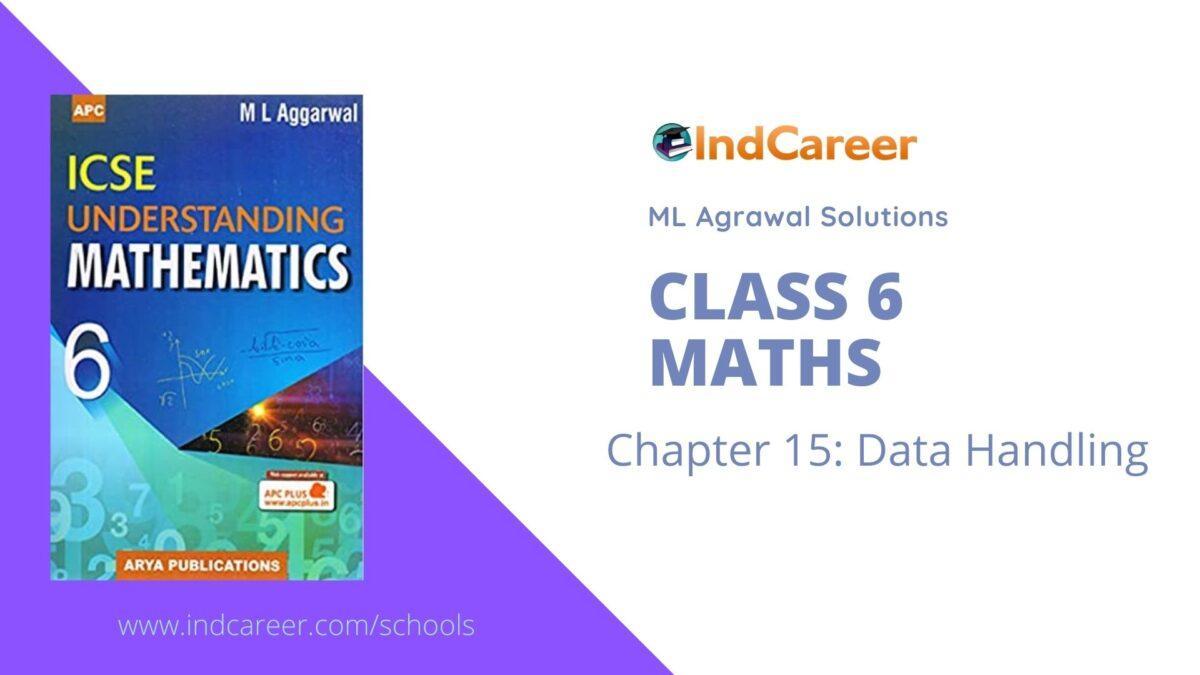Class 6: Maths Chapter 15 solutions. Complete Class 6 Maths Chapter 15 Notes.
Contents
ML Aggarwal Solutions for Class 6 Maths Chapter 15- Data Handling
ML Aggarwal 6th Maths Chapter 15, Class 6 Maths Chapter 15 solutions
1. Following is the choice of 20 students of class VI of a school:
Banana, Apple, Guava, Orange, Apple, Banana, Orange, Guava, Banana, Banana, Apple, Banana, Apple, Banana, Orange, Guava, Apple, Banana, Guava, Banana
(i) Arrange the name of fruits in a table using tally marks.
(ii) Which fruit is liked by maximum number of students?
(iii) Which fruit is liked by minimum number of students?
Solution:
(i)
| Name of fruits | Tally Marks | Frequency (no. of fruits) |
| BananaAppleGuavaOrange |     | 8543 |
| Total | 20 |
(ii) The fruit liked by maximum number of students is Banana
(iii) The fruit liked by minimum number of students is Orange
2. In a ready-made garment shop, on a particular day the following sizes of shirts were sold:
34, 38, 42, 40, 44, 32, 34, 36, 42, 40, 44, 36, 38, 42, 44, 40, 38, 40, 42, 32, 34, 38, 42, 40, 36, 42, 40, 38, 36, 40.
Arrange the above data in ascending order and construct frequency distribution table. Also answer the following questions:
(i) Which shirt size had the maximum sale?
(ii) Which shirt size had the minimum sale?
(iii) The number of shirts sold of size 42 or greater than size 42
Solution:
The frequency distribution table for the above data is as follows:
| Size of shirts | Tally Marks | Number of shirts |
| 32343638404244 |        | 2345763 |
| Total | 30 |
(i) The maximum sale of shirt size is 40
(ii) The minimum sale of shirt size is 32
(iii) The number of shirts sold of size 42 or greater than size 42 is 9
3. Following pictograph shows the number of tractors in five villages

Observe the pictograph and answer the following questions.
(i) Which village has the minimum number of tractors?
(ii) Which village has the maximum number of tractors?
(iii) How many more tractors village C has as compared to village B.
(iv) What is the total number of tractor in all the five villages?
Solution:
(i) The village which has the minimum number of tractors is Village D
(ii) The village which has the maximum number of tractors is Village C
(iii) Village C has 3 more tractors as compared to village B
(iv) Total number of tractors in all the five villages = 6 + 5 + 8 + 3 + 6
= 28
4. Observe the adjoining bar graph showing the number of students in a particular class of a school.

Answer the following questions:
(i) What is the scale of this graph?
(ii) How many new students are added every year?
(iii) Is the number of students in the year 2015 is twice than that of in the year 2012?
Solution:
(i) The scale of this graph is 1 unit height = 10 students
(ii) 10 new students are added every year
(iii) Yes, the number of students in the year 2015 is twice than that of in the year 2012
5. Find the mean of the following data:
(i) 40, 30, 30, 0, 26, 60
(ii) 3, 5, 7, 9, 11, 13, 15
Solution:
(i) Mean of 40, 30, 30, 0, 26, 60 is shown below
Number of data (n) = 6
Hence,
Mean = (40 + 30 + 30 + 0 + 26 + 60) / 6
= (186 / 6)
We get,
= 31
Therefore, the mean of 40, 30, 30, 0, 26, 60 is 31
(ii) Mean of 3, 5, 7, 9, 11, 13, 15 is shown below
Number of data (n) = 7
Hence,
Mean = (3 + 5 + 7 + 9 + 11 + 13 + 15) / 7
= (63 / 7)
We get,
= 9
Therefore, the mean of 3, 5, 7, 9, 11, 13, 15 is 9
6. Find the median of the following data:
(i) 3, 1, 5, 6, 3, 4, 5
(ii) 3, 1, 5, 6, 3, 4, 5, 6
Solution:
(i) Given
3, 1, 5, 6, 3, 4, 5
Arrange the given data in ascending order
We get,
1, 3, 3, 4, 5, 5, 6
Hence,
Median = {(n + 1) / 2}th term
= {(7 + 1) / 2}th
We get,
= 4th term
(ii) Given
3, 1, 5, 6, 3, 4, 5, 6
Arrange the data in ascending order
We get,
1, 3, 3, 4, 5, 5, 6, 6
Hence,
Median = (4 + 5) / 2
= (9 / 2)
We get,
= 4.5
Download PDF
ML Aggarwal Solutions for Class 6 Maths Chapter 15- Data Handling
Download PDF: ML Aggarwal Solutions for Class 6 Maths Chapter 15- Data Handling PDF
Chapterwise ML Aggarwal Solutions for Class 6 Maths :
- Chapter 1- Knowing Our Numbers
- Chapter 2- Whole Numbers
- Chapter 3- Integers
- Chapter 4- Playing with Numbers
- Chapter 5- Sets
- Chapter 6- Fractions
- Chapter 7- Decimals
- Chapter 8- Ratio and Proportion
- Chapter 9- Algebra
- Chapter 10- Basic Geometrical Concept
- Chapter 11- Understanding Symmetrical Shapes
- Chapter 12- Symmetry
- Chapter 13- Practical Geometry
- Chapter 14- Mensuration
- Chapter 15- Data Handling
About ML Aggarwal
M. L. Aggarwal, is an Indian mechanical engineer, educator. His achievements include research in solutions of industrial problems related to fatigue design. Recipient Best Paper award, Manipal Institute of Technology, 2004. Member of TSTE.
